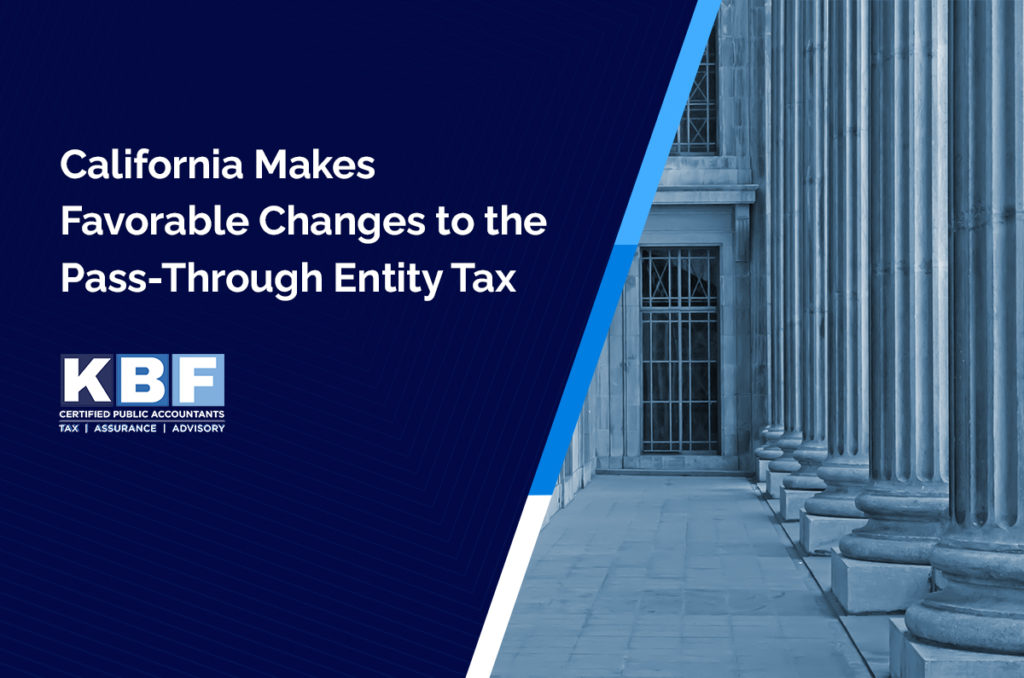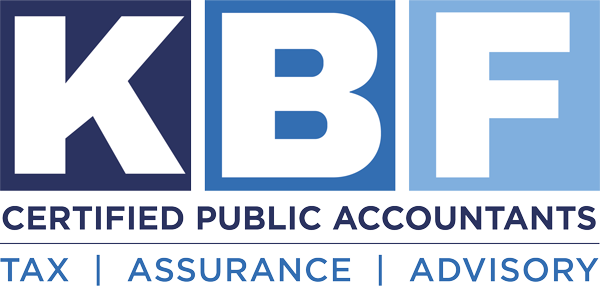California Makes Favorable Changes to the Pass-Through Entity Tax

Summary
Since the passage of the Tax Cuts and Jobs Act (TCJA) in 2017, individuals who itemize their federal tax deductions have been limited to a $10,000 deduction for state and local income taxes.
A pass-through entity (“PTE”) tax is meant to be a workaround for the federal $10,000 state tax limitation. It imposes an income tax directly on the PTE that is available as a non-refundable credit on the individual’s state tax return. The validity of a PTE tax has been the subject of scrutiny by the IRS, which left many states hesitant to adopt such a tax. In November 2020 the IRS issued Notice 2020-75, which announced the IRS’ intent to allow the PTE deduction in future regulations, validating the PTE strategy to avoid the federal $10,000 state tax limitation.
In July 2021, Governor Newsom signed Assembly Bill 150 (AB 150), which included a new elective pass-through entity (PTE) tax.
On February 9, 2022, Governor Newsom signed Senate Bill 113 (SB 113) which included several taxpayer-friendly amendments to California’s pass-through entity tax. Below is a summary of the PTE tax and recent legislative changes.
How Does California’s PTE Tax Work?
For tax years beginning on or after January 1, 2021, and before January 1, 2026; qualified entities can make an annual election to pay a 9.3% on the total of each qualified taxpayer’s pro-rata or distributive share of income subject to California personal income tax. The election to pay the tax must be made on the entity’s original, timely-filed return and is irrevocable for the taxable year.
For the 2021 tax year, the payment must be made on or before March 15, 2022.
Partners, members and shareholders who consented to the pass-through entity making the election are allowed a credit of the tax paid on their pro-rata or distributive share of the entity’s income. If the credit exceeds the tax due, any unused credit may be carried forward for 5 years or until exhausted. A partner, shareholder or member that does not consent does not disqualify the entity from making the election to pay the tax.
SB 113 amended AB 150 such that the PTE tax credit can now reduce a consenting taxpayer’s California net income tax below their tentative minimum tax. This change significantly increased the number of taxpayers that may benefit from making the PTE tax election.
What Entities Qualify for California’s PTE Tax?
Qualified entities must be doing business in California and taxed as a partnership or S corporation. This includes limited liability companies that have elected to be taxed as a partnership or S corporation.
SB 113 has amended the definition of “qualified entity” to now include PTEs that have partnerships as owners.
However, publicly traded partnerships and entities required to be in a combined reporting group still do not qualify to make California’s PTE tax election.
Who Are Qualified Taxpayers for California’s PTE Tax?
Qualified taxpayers include any individual, fiduciary, estate or trust subject to California’s personal income tax that consent to have their pro-rata share or distributive share of income taxed at the PTE level.
SB 113 amended the definition of “qualified taxpayer” to now include single-member LLCs (SMLLCs) owned by an individual, estate or trust. SMLLCs can now consent to the PTE tax and the owner of the SMLLC will receive the PTE tax credit.
However, even with the changes from SB 113, partnerships are still not considered “qualified taxpayers” such that tiered partnerships will be limited to making the election and receiving the credit at the lowest level of the tier.
Considerations
Qualified entities and their owners will need to evaluate the tax implications of making this election on an annual basis. Although the election may be quite beneficial to some, it may not be to others. There are many factors to consider in evaluating whether it makes sense for a pass-through entity to make the election. It is recommended that individuals considering this entity-level election reach out to their tax advisors to discuss the potential benefit of making this election.
